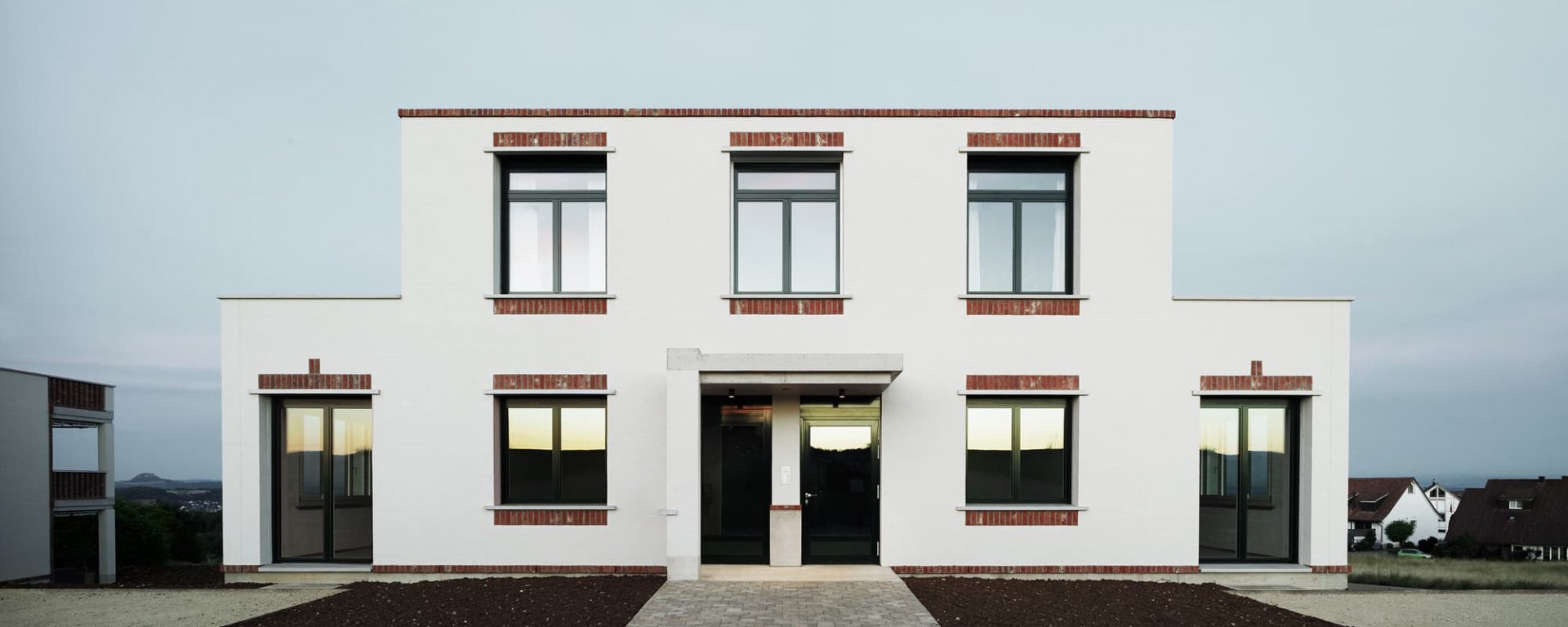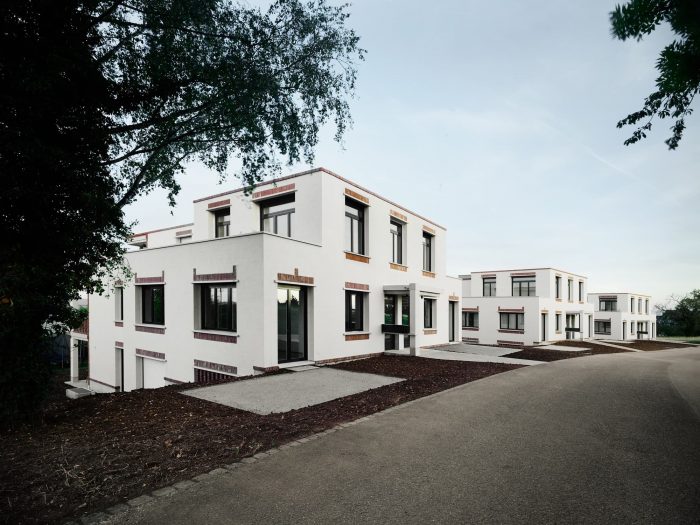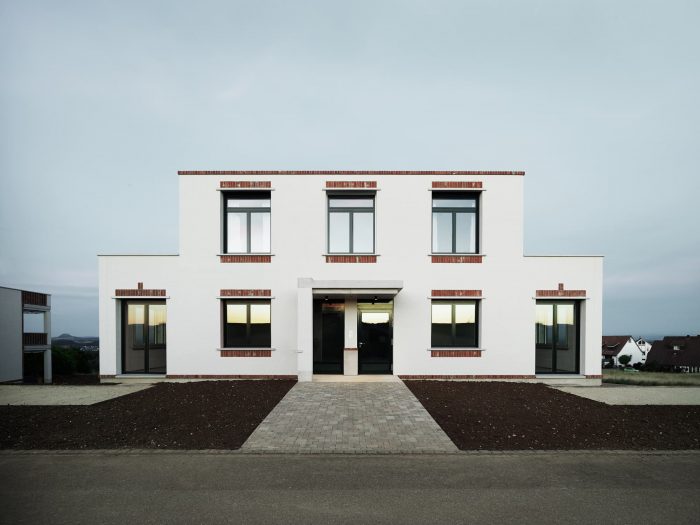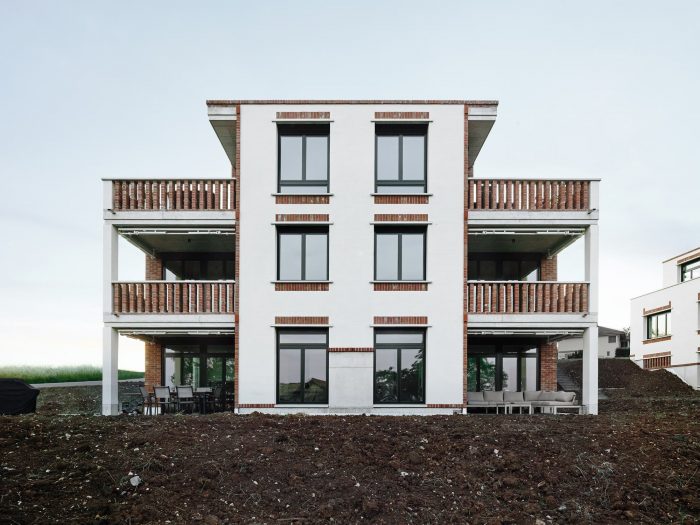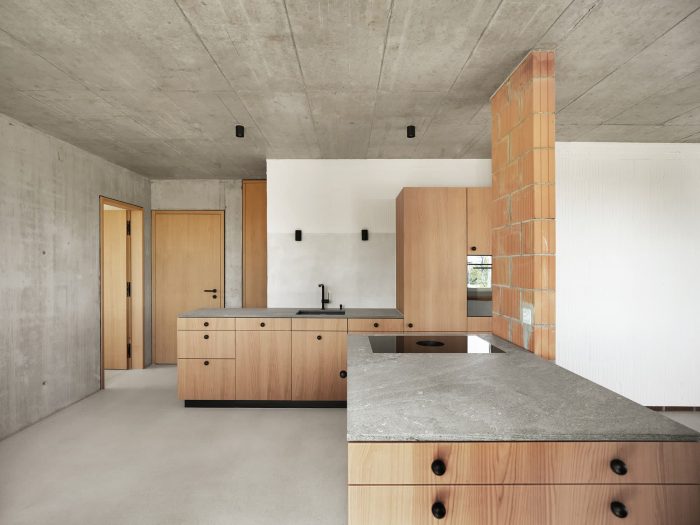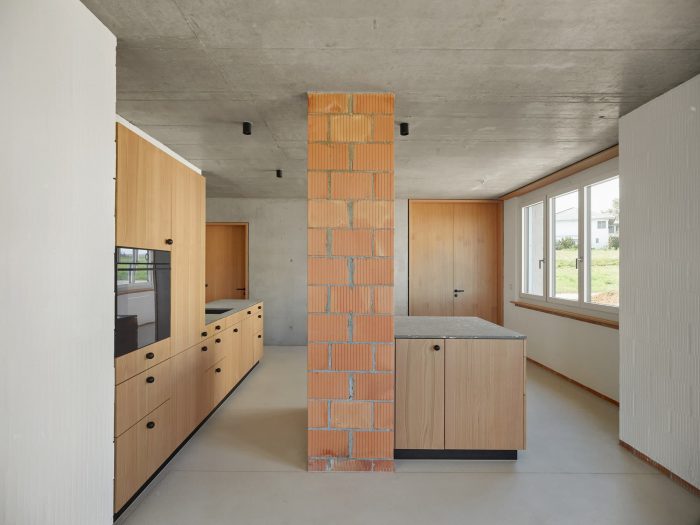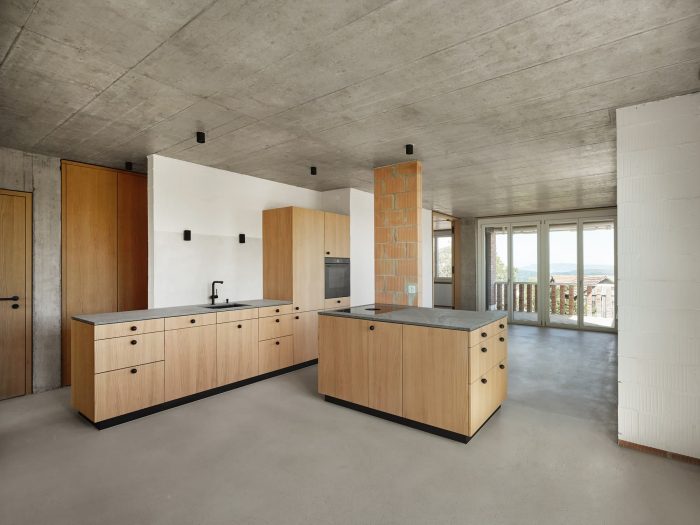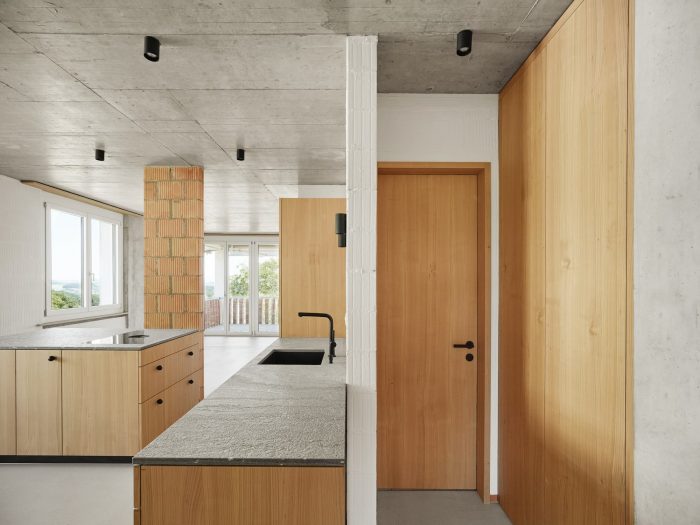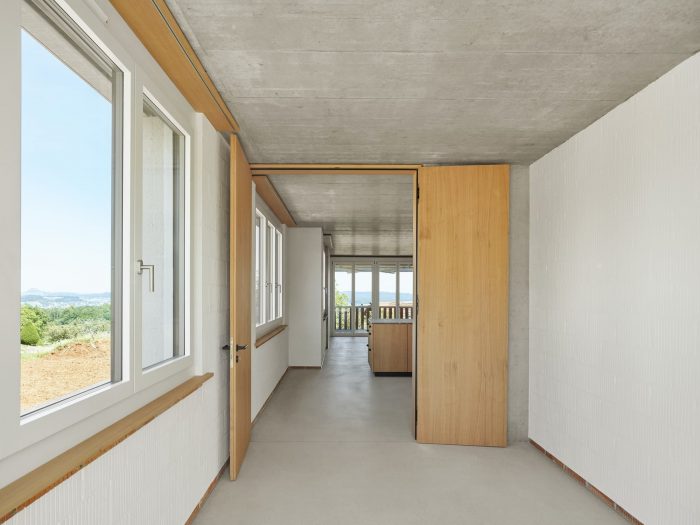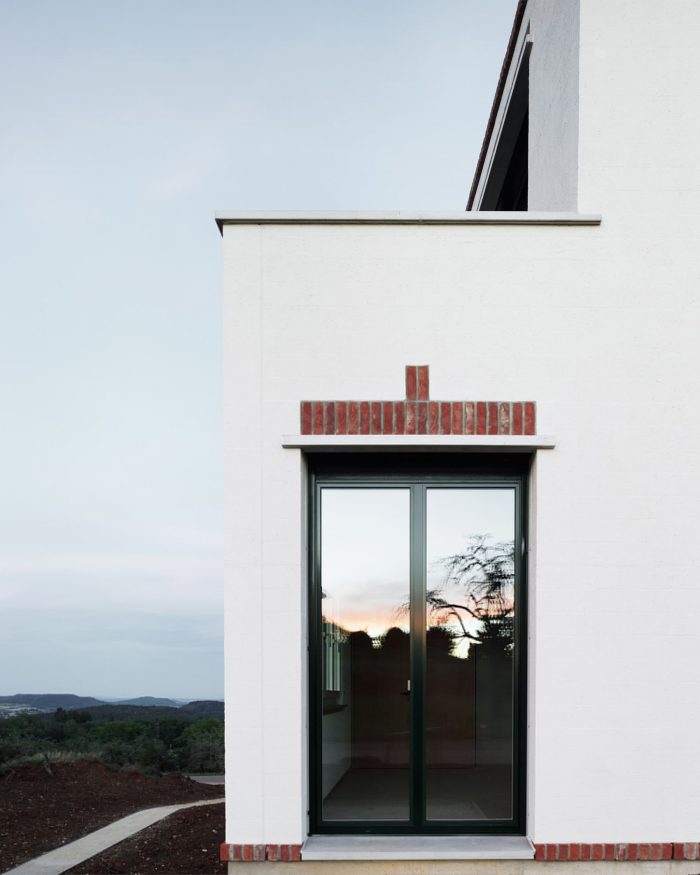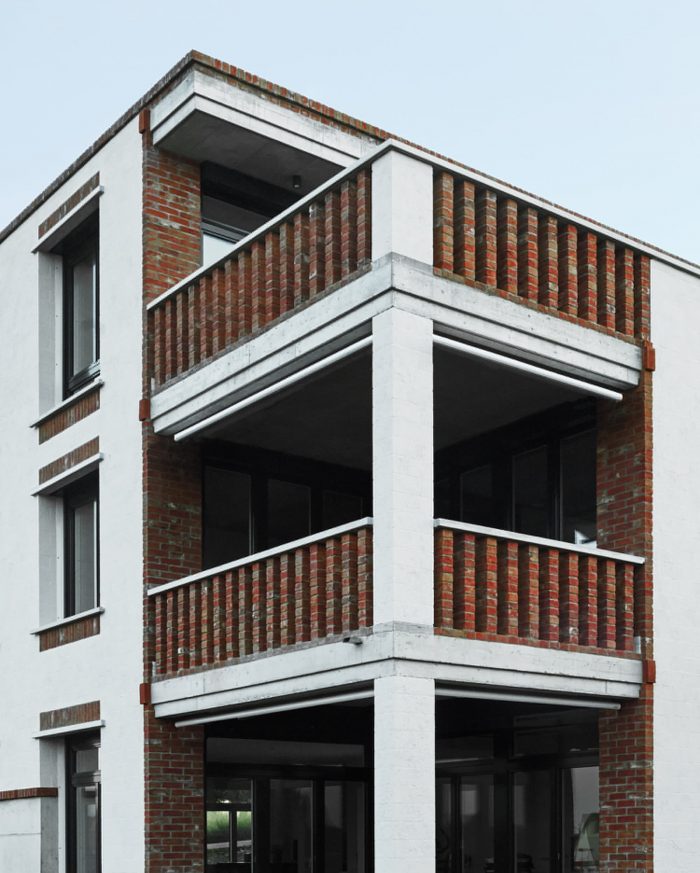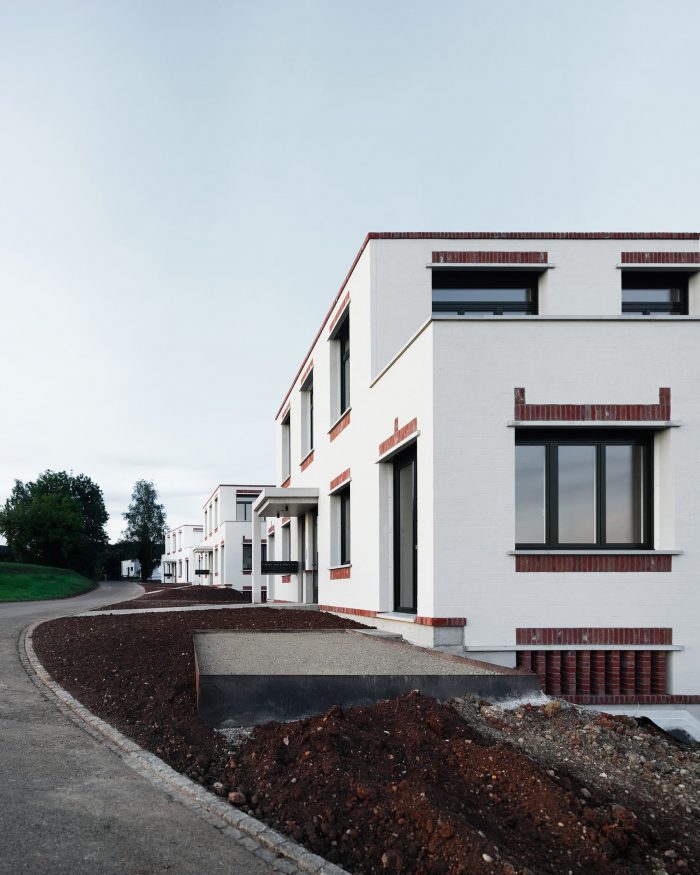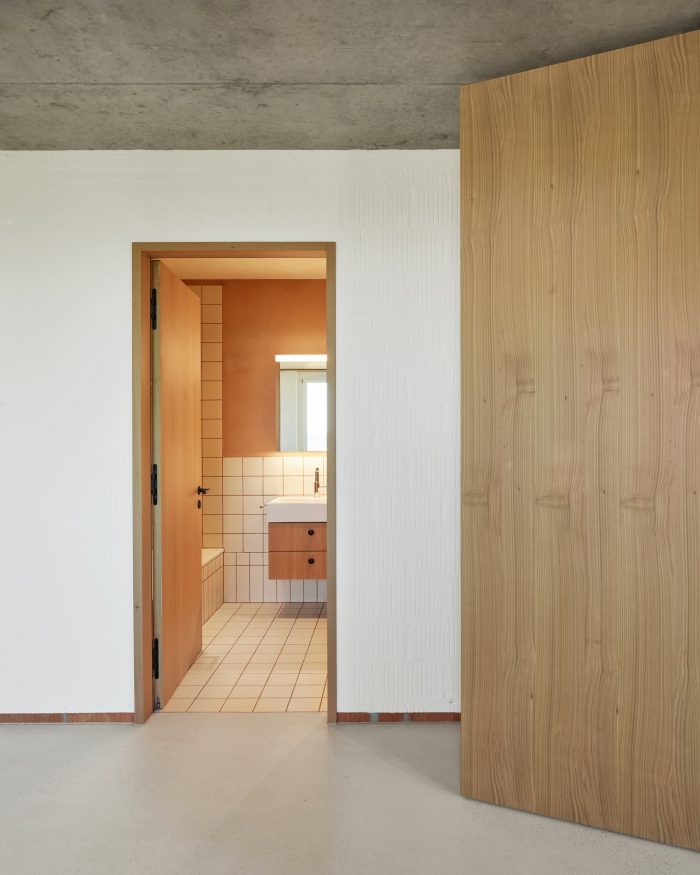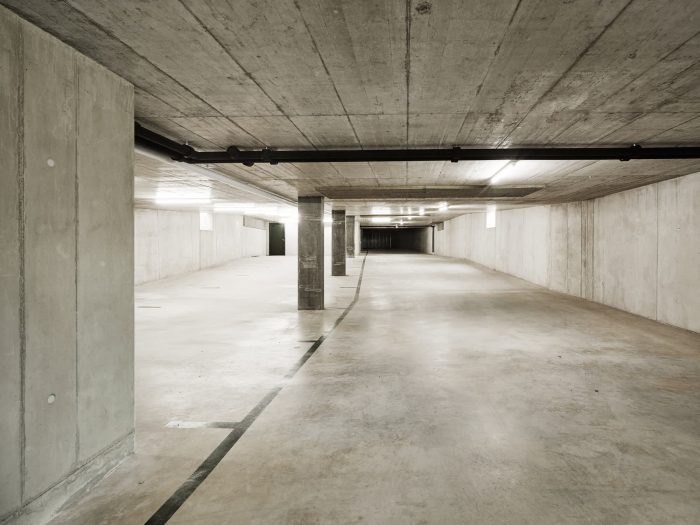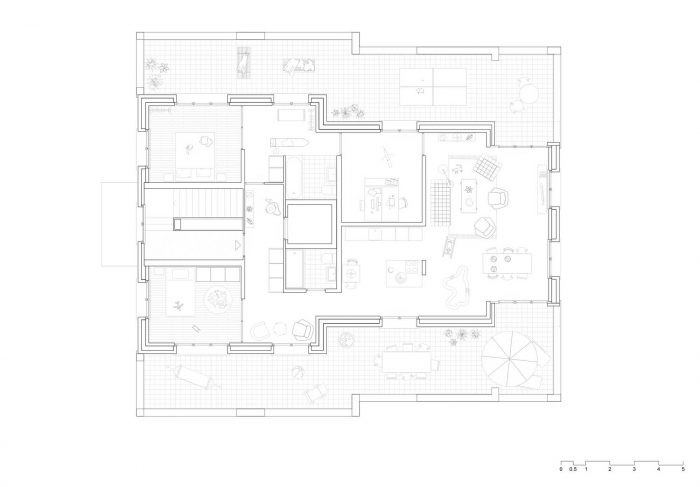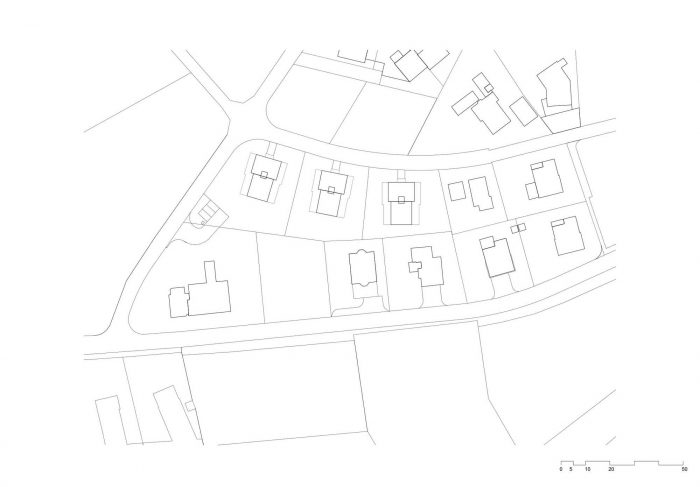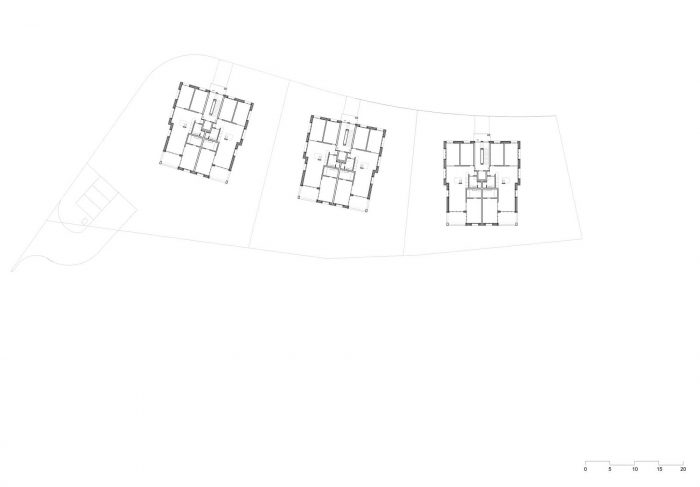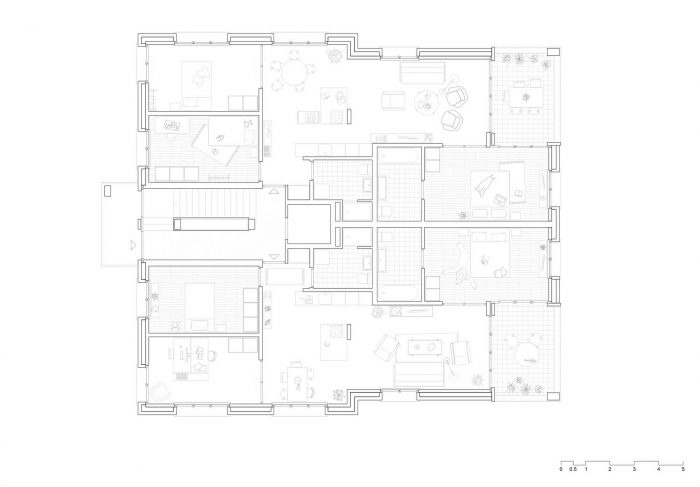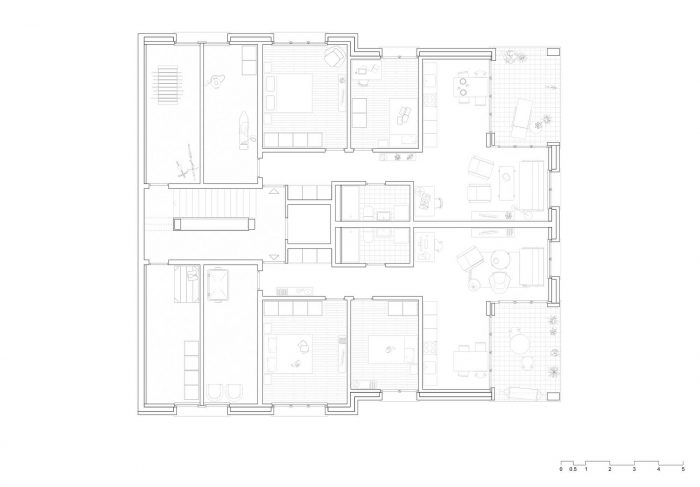在Stetten的Rootacker,提出了一个开发结构,与现有的单户住宅区相呼应。倾斜的场地被三座公寓楼占据,它们顺着地形的自然走向。虽然达到了预期的密度,但这种梯度在建筑物之间留出了足够的空间,使山谷的景色不受阻碍。三栋房子中的每一栋都包括五个明亮的单位,具有不同的尺寸和平面图。它们都有一个共同的特点,那就是朝向风景和一个流动的房间顺序。
On the Rootacker in Stetten, a development structure is proposed that corresponds to the existing neighborhood of single-family houses. The sloping site is occupied by three apartment buildings, which follow the natural course of the terrain. Although the desired density is achieved, the gradation leaves enough space between the buildings and allows an unobstructed view over the valley. Each of the three houses includes five bright flats with different sizes and floor plans. They all have in common an orientation towards the view and a fluid sequence of rooms.
建筑表达的特点是对建筑材料的特殊使用–在结构上一致,同时又很有趣。砖块是最具特色的部分。外层的双层砌体由洗净的沙灰砖制成,放在一个混凝土基座上。墙体上的开口是由预制门楣跨过的。经典的外墙门楣由钢筋混凝土核心和前面的砖壳组成,根据其功能被分割开来。跨度和覆层被分开,这两个部分都是可见的。
The architectural expression is characterized by a specific use of building materials – structurally consistent and playful at the same time. The brickwork is the most characteristic component. The outer layer of the double-shell masonry made of whitewashed sand-lime brick rests on a concrete base. The wall openings in the facing brickwork are spanned by precast lintels. The classic facade lintel, consisting of a reinforced concrete core and a brick shell in front of it, is divided up according to its function. Spanning and cladding are separated and both components are made visible.
熟料砖门楣是传统的砖石结构,除了其装饰设计功能外,还将其上面的砖石负载转移到下面的预制混凝土门楣。这反过来又保证了对邻近的沙石灰砖砌体的负荷传递。除了使用熟料作为与石灰砂砖形成对比的装饰元素外,它还被用作支撑角楼阳台的承重元素。
The clinker brick lintel is traditionally masoned and, in addition to its decorative design function, transfers loads of the masonry above it to the precast concrete lintel below. This in turn ensures the load transmission to the neighboring sand-lime brickwork. In addition to the use of clinker as a decorative element contrasting with the sand-lime brick, it is also used as a load-bearing element supporting the corner balconies.
砖石的物质性不仅体现在外部,也同样体现在内部。砖墙被涂成白色,而在支撑结构被简化为柱子的地方,砖块被完全保留。在一个同样直接针对水泥材料特性的方法中,混凝土天花板、墙壁和无水石地板被保留下来。此外,樱桃木的木质结构以其纯粹的自然性创造了一个温暖和舒适的氛围。
The materiality of masonry is not only to be seen on the outside but also to be equally tangible on the interior. The brick walls are painted white, and where the supporting structure is reduced to columns, the bricks are left completely raw. In an equally direct approach to the material characteristics of cement, the concrete ceilings, walls, and anhydrite floor are left visible. Furthermore, the cherry wood carpentry with its pure naturalness creates a warm and cozy atmosphere.
Architects: AETAL, idArchitekt.innen
Year : 2022
Photographs :Valentin Jeck
City : Stetten
Country : Switzerland

